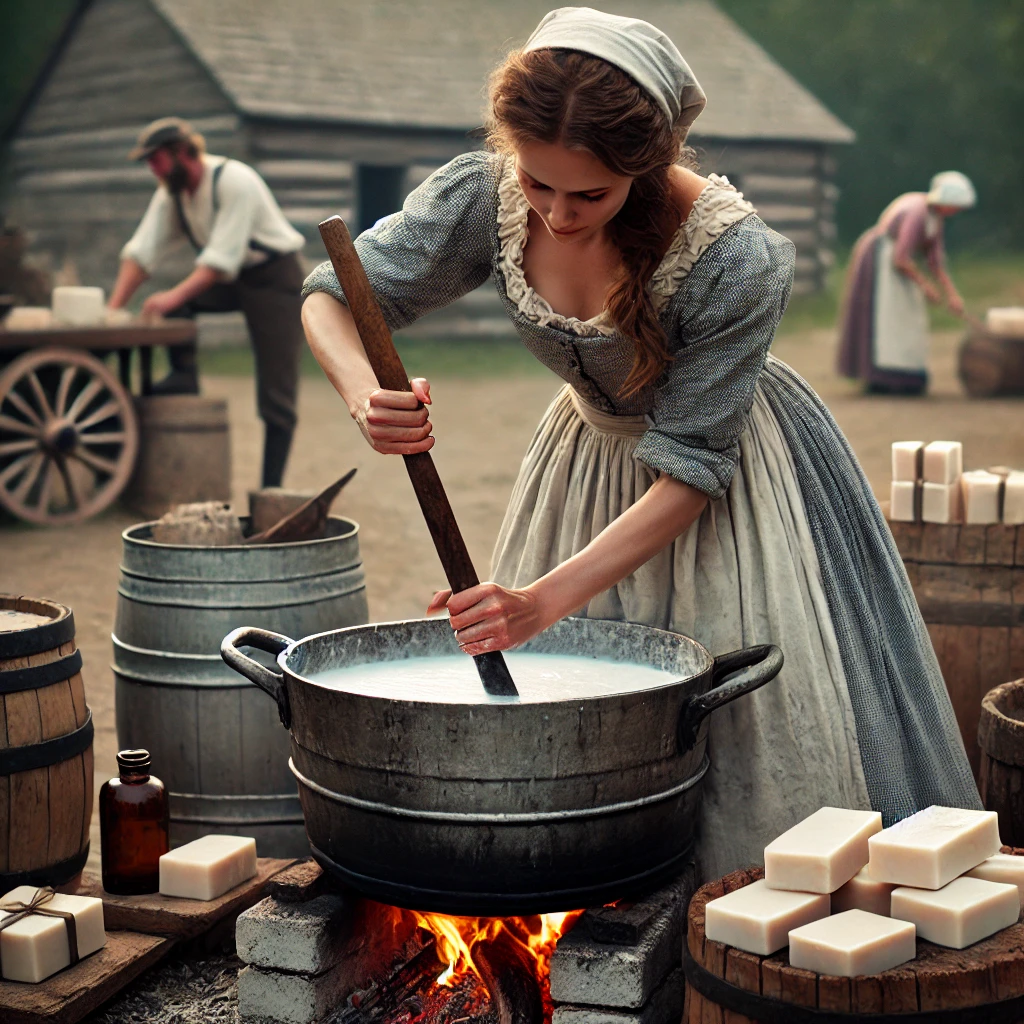It is said that soap originated in the times of animal sacrifices. The fats from the burnt animals mixed with ashes provided a cleaning effect when rain fell.
Saponification is a chemical reaction that happens naturally when alkali salts are mixed with water. Then the solution is mixed with fats. Sodium hydroxide, aka NaOH, or potassium hydroxide, aka KOH are the alkali salts commonly used. Some people don’t understand that there is no lye in “lye soap”. When the correct weight ratios are used in the recipe, the chemical reaction doesn’t leave any lye unused. The alkali salts, water and fat molecules come apart, and recombine to form molecules of soap and glycerine. Potash or (KOH) is is easily leached (verb) out of hardwood ashes. Mixing ashes with water and filtering through layers of straw, sand and/or gravel makes the solution needed. This is how our great-great grandparents most likely made soap! The “test” for correct lye in the water that was mixed with ashes was to float an egg in it. If the “circle” of egg showing above the water was about an inch in diameter, it was “just right”. How they measured the amount of lard or tallow I have no clue.
In a post titled ‘A Short History of Soap‘, David Lambert shares: “For centuries, soap has been made with animal fats as a byproduct of farming. Old-fashioned lard-and-lye soap has been around for generations and was made at home to clean laundry as well as for bathing. This was an arduous chore usually done by housewives. It involved steeping ashes to make lye, rendering saved fat and grease, and boiling the whole mess in a big iron pot. Commercial soapmakers – called chandlers because they also produced tallow candles – would collect ashes, animal fats and grease from homesteads, exchanging them for finished soap. Early homemade soaps were soft. They were kept in barrels and ladled out as needed. Salt was added to harden the soap so that it is easily cut into bars.”
Today, it is much more common to use commercial sodium hydroxide, or lye, instead of leaching ashes. Lye makes a harder soap than potassium hydroxide. Having said that, potash can make a hard soap if the fats used are solid at room temperature. Hard fats include lard, tallow and palm oil. If salt is added, it makes the bars even harder.
